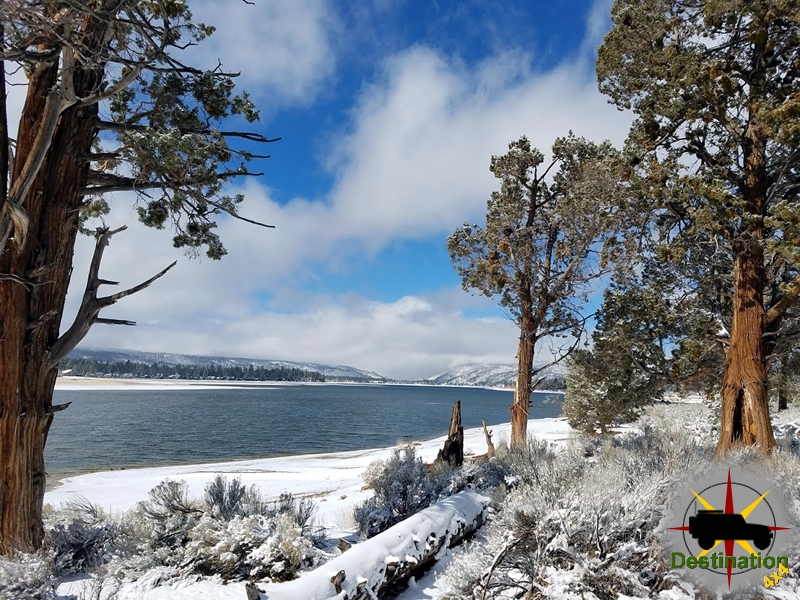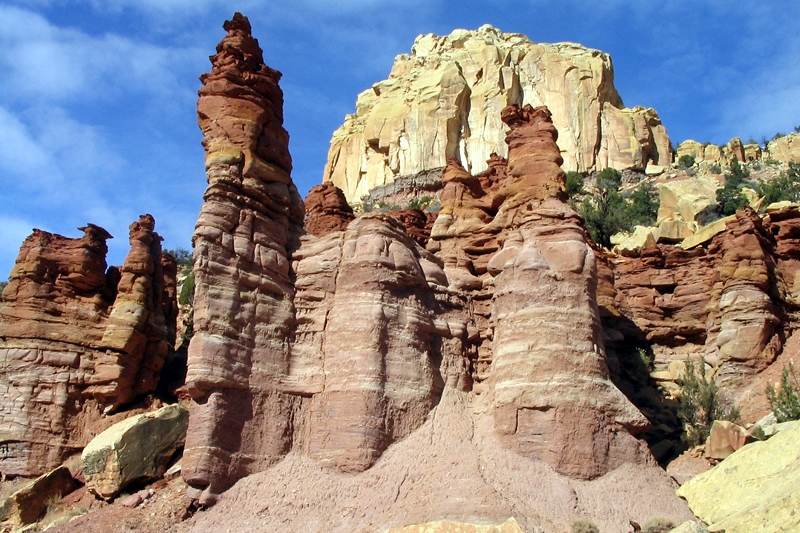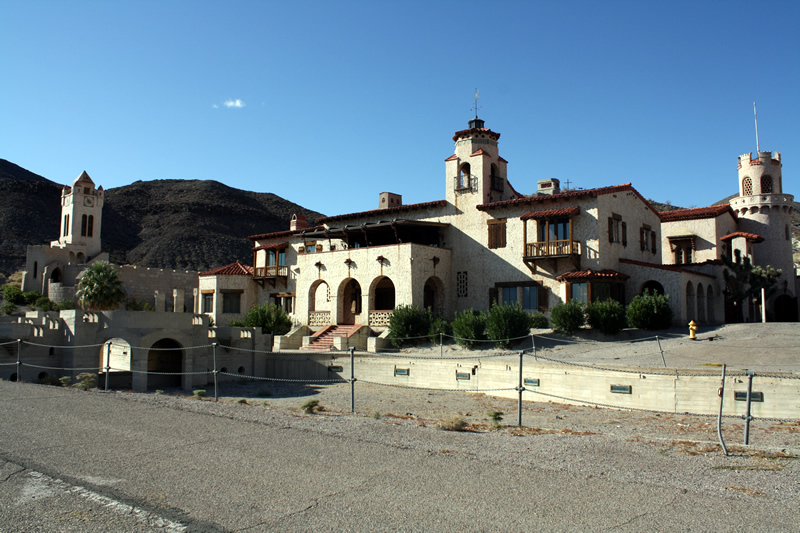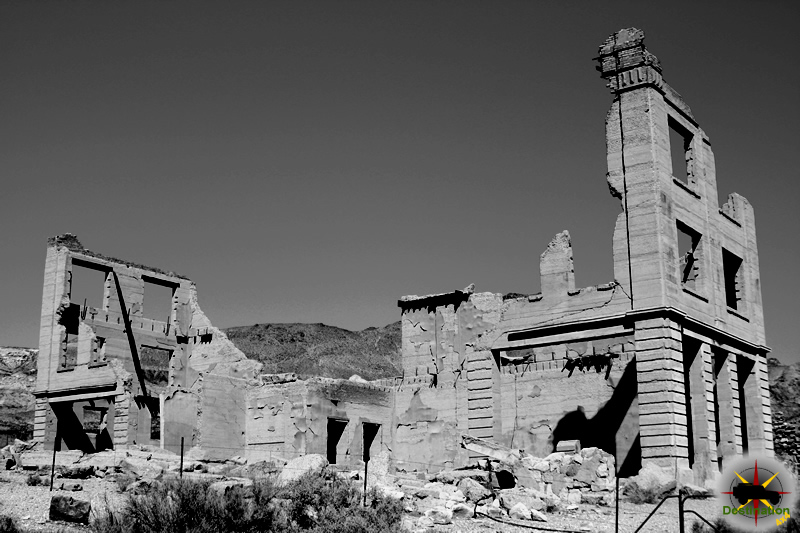
Jarbidge Nevada
Jawbidge, Nevada is a small town located in the northeastern part of the Nevada in Elko County. The discovery of gold and silver in the region brought an influx of miners and prospectors to the area, and Jawbidge quickly became a center of mining activity. “Jarbidge” is a name derived from the Shoshone language meaning “devil”. Native American Tribes believed the nearby hills were haunted.

Jarbidge, Nevada is a small town located in the northeastern part of the state with a rich mining history. The discovery of gold and silver in the region brought an influx of miners and prospectors to the area, and Jarbidge quickly became a center of mining activity.
The first miners in the area were individual prospectors who panned for gold along the Jawbidge River and its tributaries. The early miners found small deposits of gold, but it was not until the 1870s that larger deposits were discovered. These deposits were located in the hills and mountains surrounding the town.
In 1874, a group of miners discovered a rich vein of silver in the nearby Jarbidge Mountains. The discovery sparked a mining rush, and thousands of miners flocked to the area. The miners established camps and small settlements along the rivers and streams that ran through the region. The Jarbidge River, which runs through the town, was a particularly rich source of gold and silver.
The mining industry in Jawbidge was characterized by a boom-and-bust cycle. In the early days, the mining was done using simple tools like pickaxes and shovels. The miners worked long hours in dangerous conditions, and many of them died from accidents or from diseases like silicosis. Despite the dangers, the lure of gold and silver kept the miners coming.
In the 1880s, the mining industry in Jarbidge underwent a period of rapid expansion. New mines were opened, and new technologies were introduced that allowed for more efficient extraction of gold and silver. One of the most important innovations was the introduction of the stamp mill. This machine used heavy steel stamps to crush the ore, which was then separated from the waste material. The stamp mill allowed for large-scale mining operations, and it became the backbone of the mining industry in Jarbidge.

During this period, the town of Jarbidge grew rapidly. New businesses were established to support the mining industry, including supply stores, saloons, and boarding houses. The town’s population grew, and it became a center of commerce in the region.
In the 1890s, the mining industry in Jarbidge began to decline. Many of the mines had exhausted their deposits of gold and silver, and the cost of extracting the remaining ore became too high. The decline of the mining industry had a ripple effect on the town’s economy. Many businesses closed, and the population began to shrink.
Despite the decline of the mining industry, a few mines continued to operate in the area. In the early 1900s, a new mineral was discovered in the Jawbidge Mountains – tungsten. Tungsten was used to make steel alloys, and it became a valuable commodity during World War I. Several tungsten mines were opened in the area, and they helped to sustain the local economy.
In the 1920s, a new mining boom began in Jarbidge. This boom was fueled by the demand for copper, which was used in the construction of electrical wiring and other products. Several large copper mines were opened in the area, and they brought new jobs and prosperity to the town.
During World War II, the mining industry in Jarbidge played a critical role in the war effort. The mines produced copper, tungsten, and other minerals that were used to build weapons and other military equipment. The town’s population swelled as miners and other workers were brought in to support the war effort.
After the war, the mining industry in Jarbidge began to decline once again. The demand for copper dropped, and the mines began to close. The town’s economy shifted toward tourism and other industries.
Nevada State Historic Marker Text
As early as 10000 years ago, Native American hunting parties camped near horn to hunt game. About a thousand years ago, Shoshone-speaking people entered the region, where they continue to live today. The name Jarbidge comes from a Shoshone word meaning “a bad or evil spirit”.
Dave Bourne discovered gold in this isolated area in 1909 and production eventually totaled 59 million. Population size varied, but in the early l920s, the Jarbidge district replaced fading Goldfield as the premier gold-producing area in Nevada. The Jarbidge mines railed beginning in the tale 1920s.
On a stormy December 5, 1916, the last stagecoach robbery and murder in the history of the West took place in Jarbidge Canyon, ¼ mile south of the town.
STATE HISTORICAL MARKER NO. 69
STATE HISTORIC PRESERVATION OFFICE
NORTHEASTERN NEVADA HISTORICAL SOCIETY
Jarbidge Trail Map
Jarbidge Town Summary
| Name | Jarbidge, Elko County, Nevada |
| Other Names | Ja-ha-bich |
| Location | Elko County, Nevada |
| Latitude, Longitude | 41.8728, -115.4446 |
| Elevation | 1932 meters / 6339 feet |
| GNIS | 860185 |
| Nevada State Historic Marker | 69 |
References
Nevada’s Southern Boundary 1861-1867
Old Boundary (Nevada’s Southern Boundary 1861-1867) is Nevada State Historical Marker number fifty eight located in the Nye County, Nevada. The marker is located about 6 miles north of Beatty along highway 95. Beatty, Nevada was an old mining town and served as ta border town for old Nevada. The boomtown was provided passengers, frieght and mail service by three railroads, Tonopah and Tidewater Road, Las Vegas and Tonopah Railroad and the Bullfrog and Goldfield.

In 1867, the Nevada Legislature approved the action of Congress to add that portion of the Territory of Arizona which lay to the south of this line, west of the 114 degree west longitude and the Colorado River, and to the east of the boundary of California. This action, taken on January 18, 1867, gave to the State of Nevada the permanent boundaries as they are today.
Nevada State Historical Markers identify significant places of interest in Nevada’s history. The Nevada State Legislature started the program in 1967 to bring the state’s heritage to the public’s attention with on-site markers. Budget cuts to the program caused the program to become dormant in 2009. Many of the markers are lost of damaged.
Nevada State Historic Marker Text
The 37th degree north latitude is marked at this point as the dividing line between the Territories of Utah and New Mexico under the provisions of the Compromise of 1850 which originally organized the land ceded by Mexico in 1848.
When the Territory of Nevada was carved from western Utah in 1861, this line became the southern boundary of the new territory and continued to serve as such when the Territory and State were enlarged by extensions to the east in 1862 and 1866 respectively.
In 1867, the Nevada Legislature approved the action of Congress to add that portion of the Territory of Arizona which lay to the south of this line, west of the 114 degree west longitude and the Colorado River, and to the east of the boundary of California. This action, taken on January 18, 1867, gave to the State of Nevada the permanent boundaries as they are today.
STATE HISTORICAL MARKER No. 58
STATE HISTORIC PRESERVATION OFFICE
Summary
| Nevada State Historic Marker | 58 |
| Name | Old Boundary (Nevada’s Southern Boundary 1861-1867) |
| Location | Nye County |
| Latitude, Longitude | 36.9832, -116.7246 |
References
Lucy Grey Goldmine
The Lucy Grey Goldmine trail is a short 4×4 trip out of Primm, Nevada up to an old mine site. The route is fairly accessible and almost any SUV or 4×4, but the route finding can be tricky is you are not careful. A slight mistake in navigation and you will be in some rough country. To find the trail head, exit and head past the outlet stores and the Lotto Store. The trail head is the dirt road where the paved road turns left.

The trail heads straight out into the desert. When you reach the railroad tracks, turn right and follow the road next to tracks until you reach a railroad signal station. There is a pass through under the train track and a nice little sign which reads Lucy Grey to let you know you are on your way.
From the railroad signal station the trail heads up an alluvial fan into the hills. Once you reach the gully and head into the hills, the trail becomes hard to follow, so pay attention to GPS coordinates, or your map. The trek is mostly easy with one or two small sections that will require you to pay a little more attention. The most difficult part of this trail is the route finding up to the mine and town site.
Continue Reading →Chemung Mine
Located off the Masonic Road between Bridgeport, CA and the Masonic town site, are the remains of the Chemung gold mine. The Chemung gold mine operated from from 1909 to 1938 and produced over one million dollars in gold. In the 1920s, the Chemung mine was producing low grade and high grade ore. The ore was processed onsite, and then shipped to near by Bodie for smelting.

Along with the increase cost of mining supplies which reduced growth, a poor gold market and the cost of hauling the ore to Bodie over the poor roads for smelting and little mine was doomed and closed its doors in 1938.
The Chemung mine history is not a mining failure, but a failure of management and litigation. During its time of production, the mine built and tore down three mills. During the last year of operation in 1938, 20 men worked the site and less than one year later the mine was closed. The mine itself produced well, however endless litigation for various reasons doomed the mine.

Throughout the 1950s and 1960s new life was found in the mine with the efforts of Elton “Heinie” Heinemeyer. Heinemeyer mined for years but never struck it big. Well liked by the town of Bridgeport, CA Heinemeters well being was the source of concern for the people of Bridgeport and it is reported that he would always find time to visit and entertain those who traveled to check up on him.
Currently, the mill building structure is intact but the years of harsh weather have taken its toll. A mild wind will cause some of the walls to shake or shudder, and the lower outer wall is leaning outward. In June 2016, bars restricted access to the mines themselves although the mines do offer a cold breeze on a warm day to cool you down.

There are stories that the site is haunted by a spirit or ghost, but only on Saturday nights, which seems a bit odd to me.

On a personal note, the Chemung mine surprised me. I have been to Aurora three times, Masonic at least three times, and Bodie… at least ten. My last visit to Bodie was in 2013. Afterwards this last trip, I was looking in Google Earth when I “discovered” the Chemung gold mine. How had this mine, such an impressive structure, evaded my radar for so many years? It took me three years from that day to make my first visit to Chemung, and this place is definately on my list for a repeat visit.

Chemung Mine Trailmap
Resources
Scottys Castle – The Death Valley Ranch

Named after Walter Scott AKA “Death Valley Scotty”, Scottys Castle or the Death Valley Ranch is located on some 1500 acres in Grapevine Canyon in Death Valley.
Built by Scott’s benefactor Albert Johnson in 1922, the Death Valley ranch cost between 1.5 – 2.5 million to construct at that time. The stock market crash of 1929 cost Johnson a considerable amount of money, and the ranch was never finished.
Scotty was a prospector, stunt rider and con man who used to con investors in to backing his “mining” adventures. It was reported that when the investor’s delegation wanted the view their new mine, Scotty would march them around the hot valley until they forgave or forgot about their investment.

On March 11, 1906 Scotty stared as himself in a play which opened in Seattle to a full house. We was arrested after his only performance and the charged for his crimes, the publicity exposed him to new investors. In spite of this Albert Johnson maintain interested in his “mine”. Another investigator was sent, who reported back that the mine did not exist. Johnson refused to believe this, and the following year he visited the mine himself, but left without seeing the mine. He was later sued by his investors in 1915 and ended up in jail.

In 1922, Johnson started building Scotty’s castle as a vacation home. When the size and scope of the property was realized, people assumed Scotty used the proceeds for his gold mine to pay for the Ranch. Scotty, ever the promoter did nothing to correct the record and soon The Johnson’ vacation home is associated with him
The Death Valley Ranch was know as “Scotty’s Castle in spite of the fact that Scotty rarely stayed over, rather living and sleeping at a 5 room cabin in lower vine canyon a short distance away

Due to its remote location, the Death Valley Ranch needed to maintain its own power station and water supply and evaporation cooling system. Despite the conditions, Scotty’s Castle boasts a 1,121 pipe theater organ, fountains, clock tower and a massive unfinished swimming pool.

There is no longer gas available at Scotty’s castle or grapevine canyon.
Scottys Castle was flooded in 2015 and not currently open to the public. The opening date has been pushed many times and currently scheduled for 2022. The flood was the result of over 3 inches in rain in just over 5 hours. The flash flood left debris in the visitors center over one foot deep and washed out the road.
Scotty’s Castle Summary
| Name | Scotty’s Castle |
| Location | Death Valley National Park, California |
| National Register of Historic Places | 78000297 |



